Good morning, sunshine!
When the sun rises high enough to warm Blue-eyed Grass (Sisyrinchium angustifolium), its violet-blue flowers open wide to soak up the rays. A passing rain shower or dark clouds, however, will cause this sun-worshipper to fold up tight and hide until the sun reappears. From early May through June, and occasionally even later, the flowers of Blue-eyed Grass welcome the sun like kids on spring break.
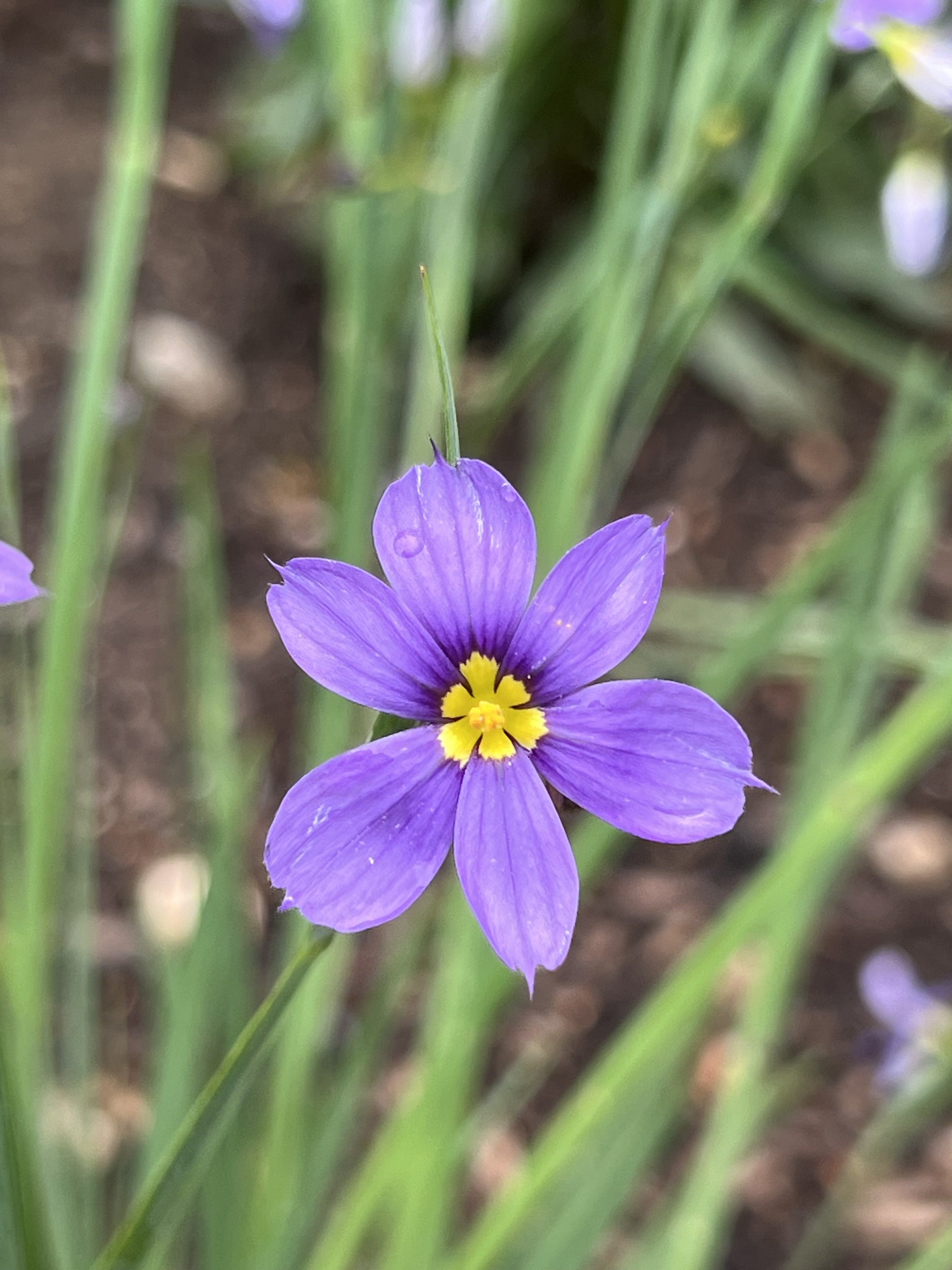
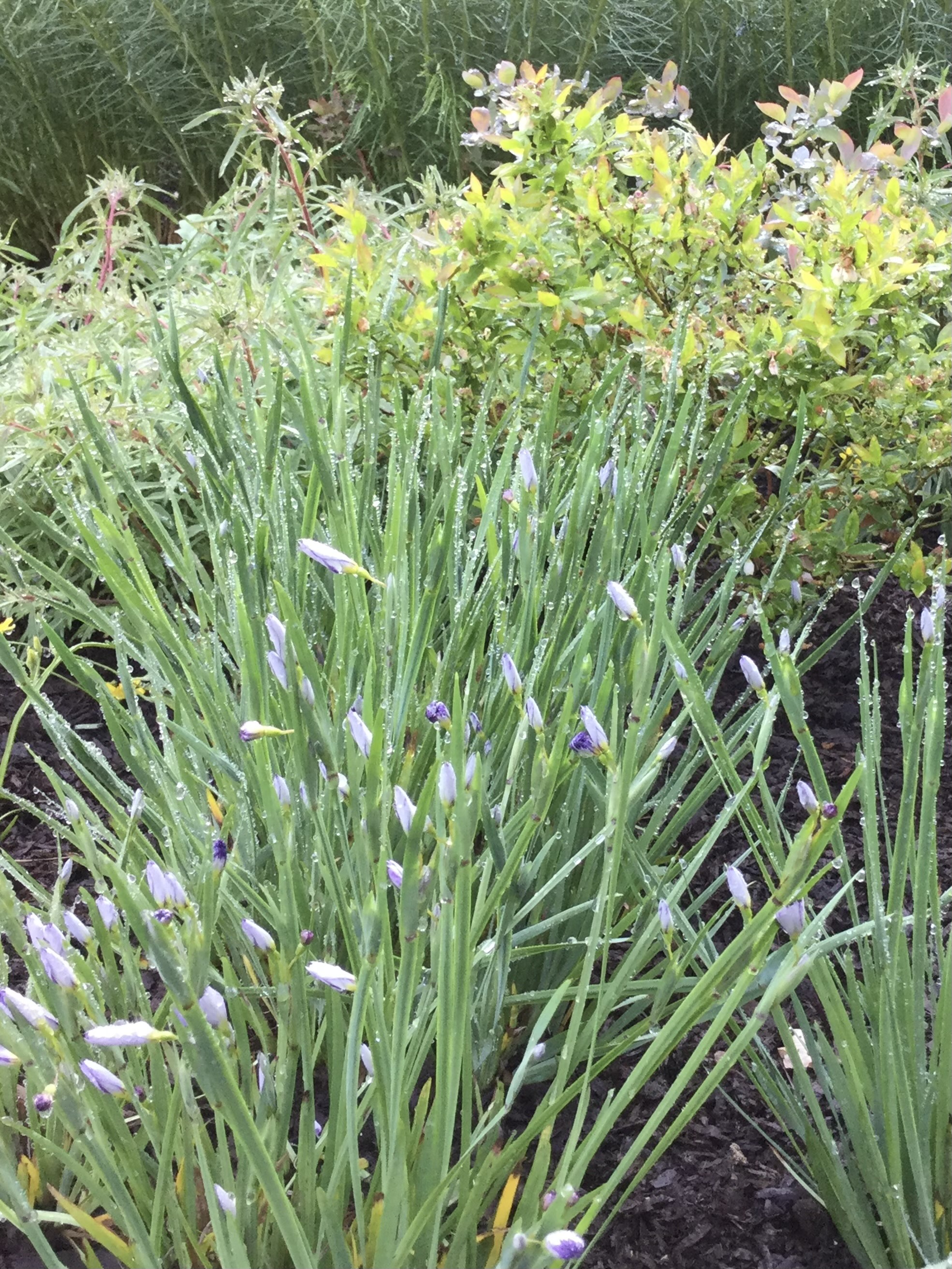
Despite its common name, Blue-eyed Grass is not a grass at all. It’s actually in the iris family. The leaves are blade-shaped, like miniaturized versions of the leaves of bearded iris. And the flowers emerge from slits in the sides of the leaves, as they do in other irises.
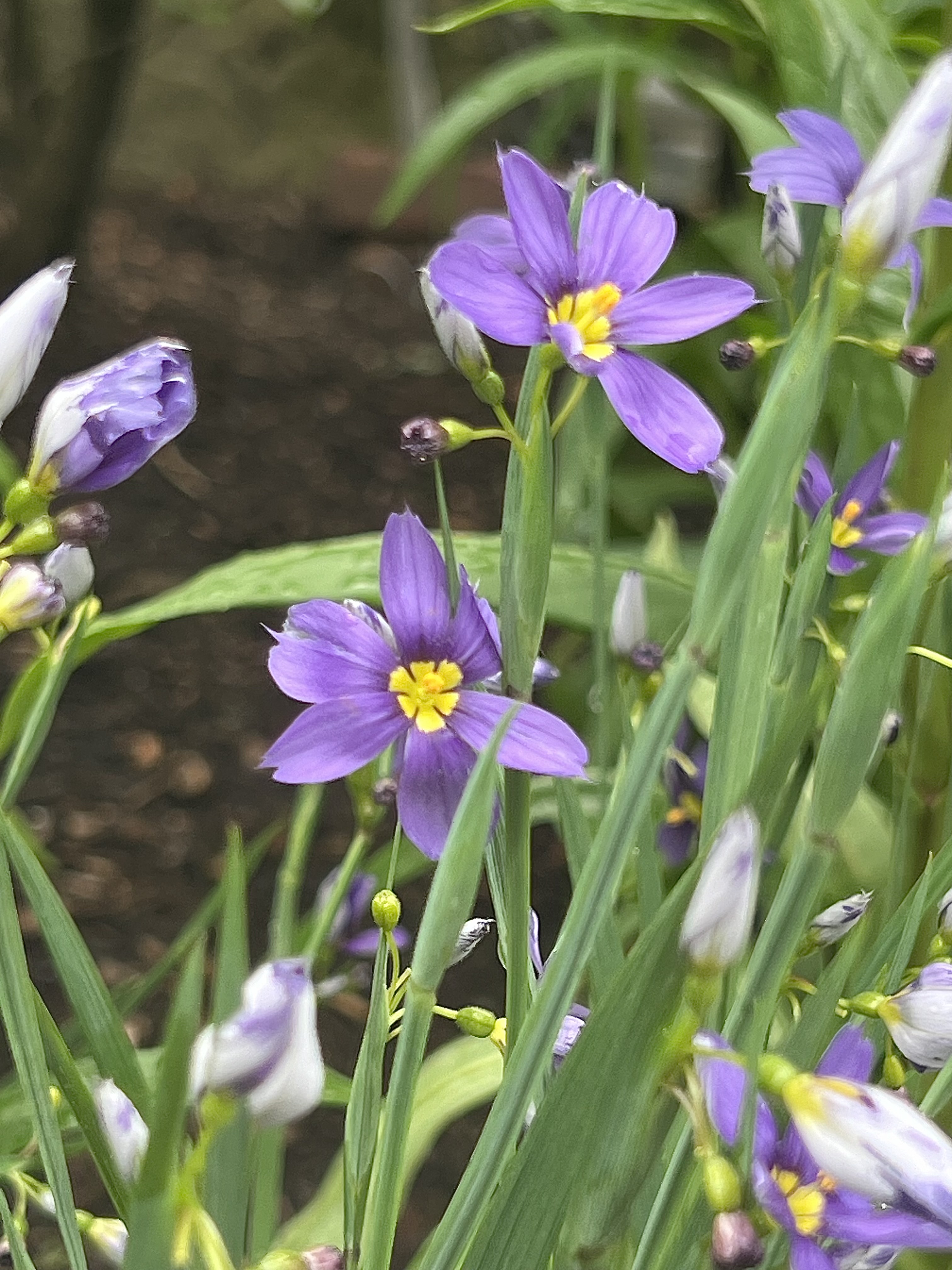
The plant is only 6 to 12 inches tall, and the flowers are less than an inch across with cheery yellow centers. The small flowers can create a big effect if they are grouped along a walkway or at the front of a garden. They are a great choice for rock gardens, and for lining the edge of a paved path where the soil tends to be thin, poor, and rocky. Blue-eyed grass actually prefers poor soil and will suffer in rich, organic soil. Regular moisture is ideal as long as the soil is well drained — so a path to the front door is the perfect spot!
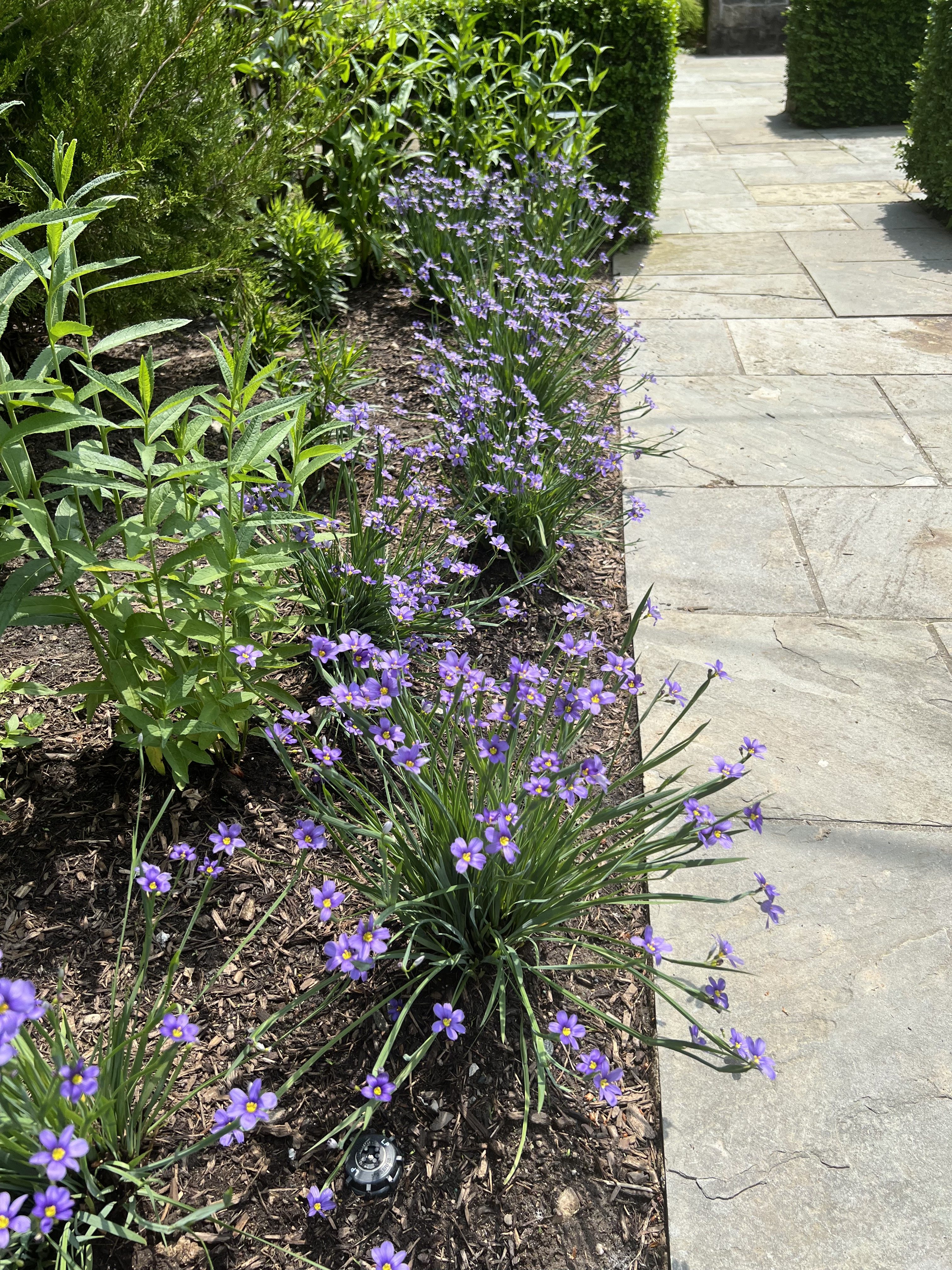
Blue-eyed Grass is native to most of Eastern North America, from Newfoundland to Minnesota and south to Texas and Florida. Its typical habitat is damp meadows or grassy riverside areas where there is moisture, but sandy or rocky soil that prevents water from settling around the growing crown or roots. Most growers advise against mulching around the plant’s crown to prevent rotting. As long as you avoid that, the plant is virtually care free.
Blue-eyed Grass continues looking good even after the bloom season ends. The grassy clumps blend well with other small perennials or ground covers and stay fresh through fall. Hardy in zones 3 to 9, the foliage is semi-evergreen except in the coldest zones, and it is does not seem to mind being buried by snow shoveled off of walkways.
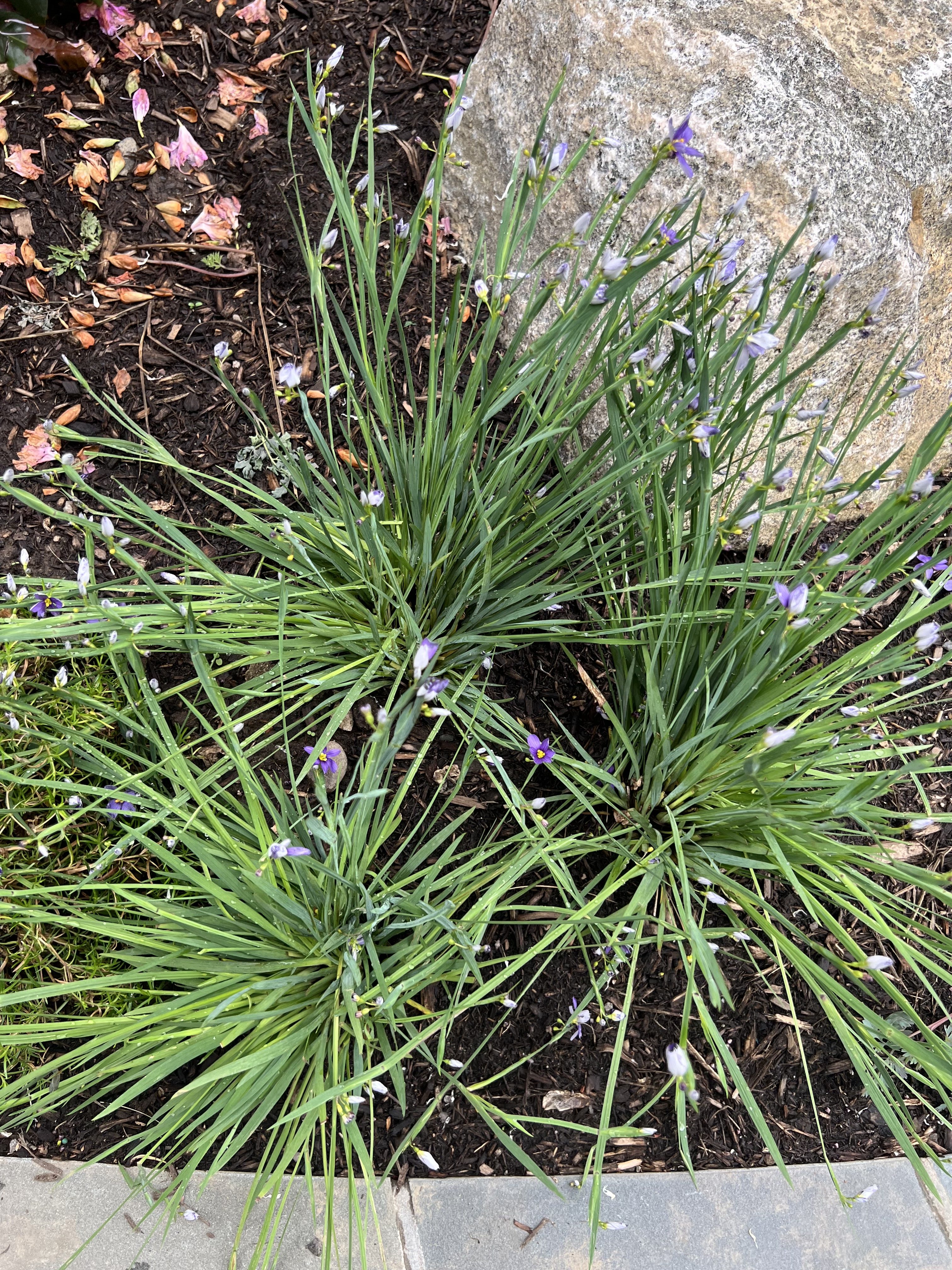
Blue-eyed Grass is increasingly popular with suburban gardeners, so it is fairly easy to find at nurseries. A cultivar called ‘Lucerne’ was developed in Switzerland by horticulturists working with the North American native plant. Its flowers are bit bigger and darker blue than the straight species (all of the photos above are of ‘Lucerne’). Blue-eyed Grass is not attractive to deer or other mammals, but it does attract pollinators, so it’s a great addition to pollinator gardens. And the seed pods are favored by cardinals, house finches, and other songbirds late in the season.
Individual plants of Blue-eyed Grass are not long-lived, but they do seed themselves near the mother plant, so colonies can continue indefinitely. If re-seeding is not desired, dead-heading the flowers after blooming will prevent that. In fact, the whole plant can be sheared in mid summer to keep it tidy after blooming. Blue-eyed Grass grows from a small rhizome, but will also spread itself by sending out off-sets from the roots of the parent plant. If older plants seem to bloom less than before, they can be divided by digging up the plant and carefully teasing apart the roots to create new plants as well as refreshing the old one.
Though Blue-eyed Grass can be grown fairly easily from seed, it will take a few years to bloom. Container specimens can be planted in spring or early fall to give the roots time to develop. Gallon-sized or larger container plants will put on a good show their first season.
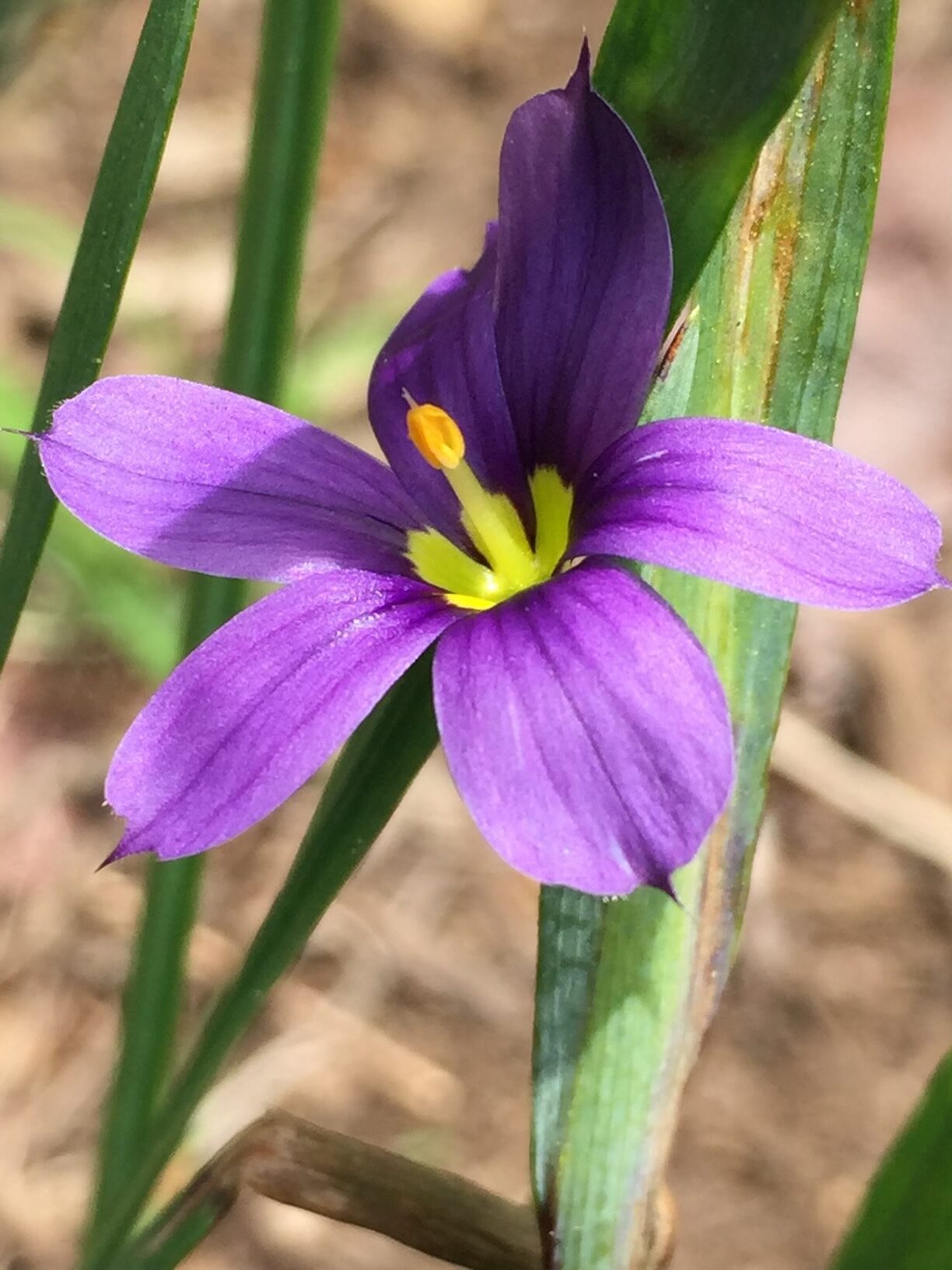
Photo: Travis Brady
It’s a bit surprising that we don’t see this wonderful native plant more often in suburban yards. Instead of planting annuals that must be replaced every year, why not choose this native perennial for your front walk or along the edge of your patio?
If you do, blue skies will have Blue-eyed Grass shining for you!

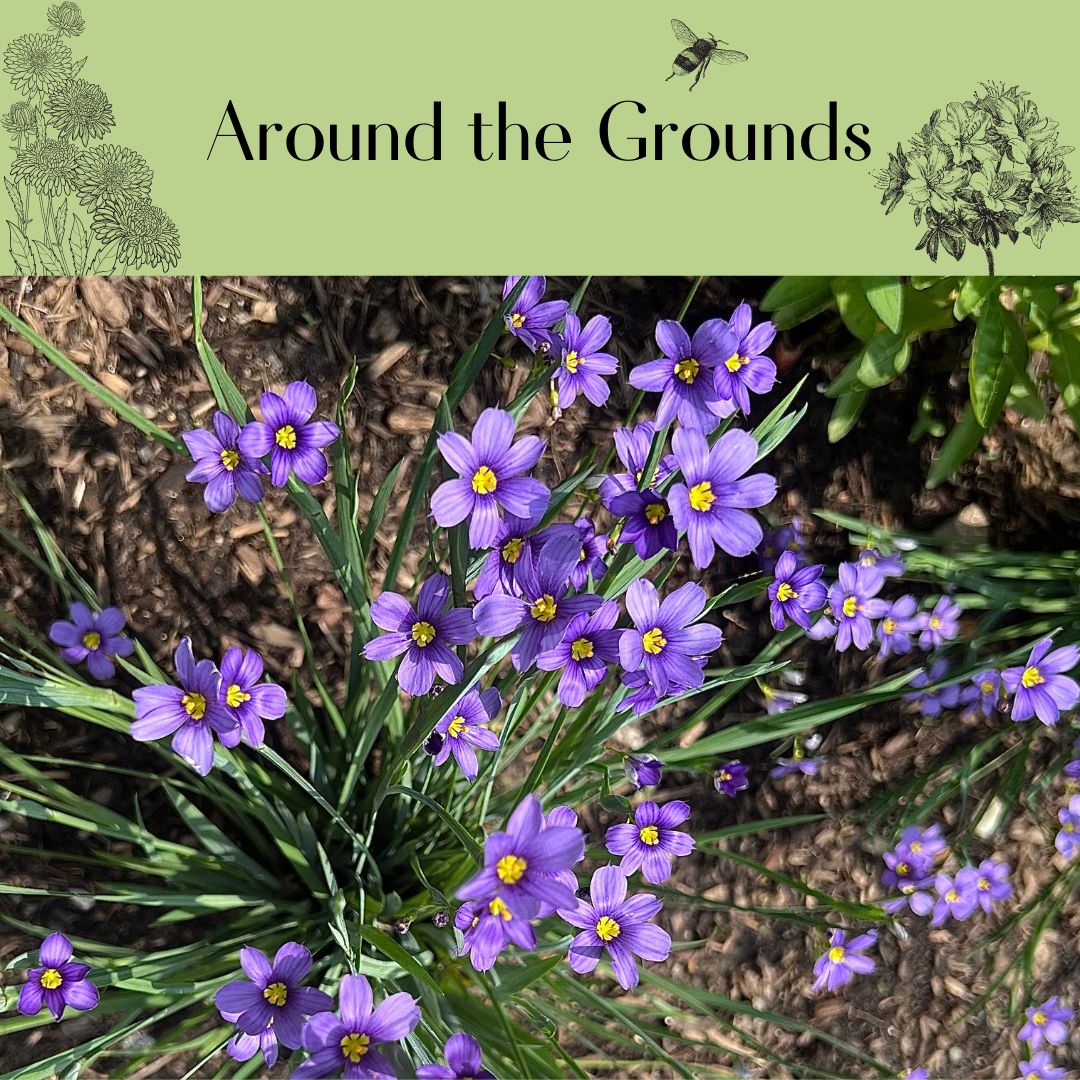
learned so much from this!!
Yay! Thank you — hoping to spread the info that will motivate folks to plant native plants!